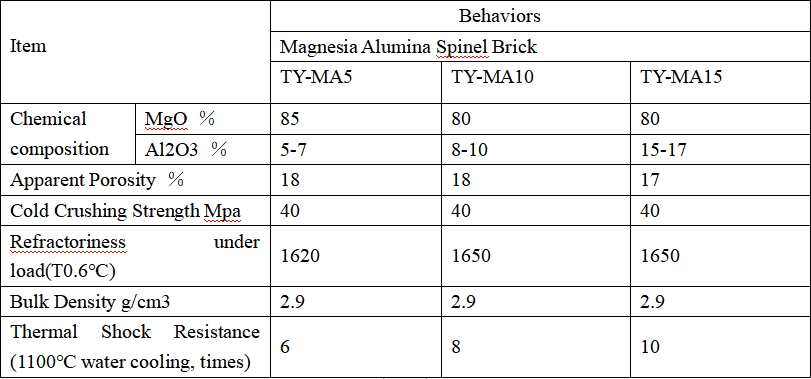
High-temperature environments pose significant challenges for refractory materials. In industries such as steelmaking, cement production, and glass manufacturing, the performance of refractory bricks is crucial to ensuring operational efficiency and equipment longevity. Among the many types of refractory materials available, high-temperature magnesia-chrome bricks have emerged as a reliable solution due to their exceptional properties. This article explores the key indicators—fire resistance and load softening temperature—and their practical significance in real-world applications.
The superior performance of high-temperature magnesia-chrome bricks stems from the unique composition of their raw materials. High-purity sintered magnesite and refractory-grade chromite ore are carefully selected and processed to ensure structural integrity and thermal stability. Sintered magnesite provides excellent thermal conductivity and resistance to chemical attack, while refractory-grade chromite enhances the brick's ability to withstand extreme temperatures and mechanical stress.

These bricks exhibit remarkable strength, corrosion resistance, and thermal shock stability. For example, in blast furnace linings, they effectively resist the aggressive conditions caused by molten slag and high-temperature gases. Their anti-erosion and anti-slag properties make them ideal for use in rotary kilns and other high-temperature industrial furnaces. Compared to traditional magnesia bricks, they show better durability and longer service life under similar operating conditions.
Two critical indicators that determine the performance of high-temperature magnesia-chrome bricks are fire resistance and load softening temperature. The fire resistance of these bricks typically exceeds 1750°C, ensuring they can withstand the intense heat generated in industrial processes. The load softening temperature, which measures the material’s ability to maintain its shape under pressure at high temperatures, is usually above 1450°C. These values indicate the material’s ability to perform reliably even in the most demanding environments.
| Performance Indicator | Value |
|---|---|
| Fire Resistance | ≥1750°C |
| Load Softening Temperature | ≥1450°C |
.jpg)
When compared to traditional magnesia bricks, high-temperature magnesia-chrome bricks offer distinct advantages. According to industry data, in high-temperature zones of steelmaking furnaces, magnesia-chrome bricks demonstrate up to 30% longer service life than standard magnesia bricks. This is attributed to their enhanced resistance to thermal stress and chemical erosion. A case study from a leading steel plant showed that replacing conventional magnesia bricks with high-temperature magnesia-chrome bricks reduced maintenance frequency and improved overall process efficiency.

In summary, high-temperature magnesia-chrome bricks provide an optimal balance of strength, durability, and thermal resistance. Their superior fire resistance and load softening temperature make them a preferred choice for high-temperature industrial applications. By selecting these advanced refractory materials, manufacturers can significantly improve equipment performance and reduce long-term maintenance costs.
If you're looking for a reliable and high-performance refractory solution, consider choosing our high-temperature magnesia-chrome bricks. Contact us today to learn more about how we can help meet your industrial needs.
Request a Free Sample or Quote
